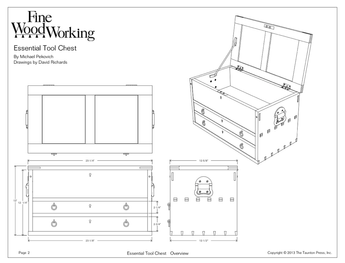Hi There – I’m so new I’m not sure if this is even the right place for this question. I have a teak dining table that I sanded down, put conditioner on, and then stained with Minwax wood finish in ebony. It says I need to put a top coat on the ebony to protect the finish. I looked at the Minwax poly-wipe product, but am not to thrilled about having to put a coat on, sand, and then put a second coat on. I also don’t want a high-gloss finish as the rest of of the teak furniture is Scandinavian and has a real soft woody look. This being the first time I have every done any woodwork I was hoping I could get some advice. Should I use a Tung or Teak oil instead of poly-wipe for a top coat? Can I avoid having to sand again? Help? Thanks so much for any advice. If it matters, I think the table may be veneer.
Discussion Forum
Get It All!
UNLIMITED Membership is like taking a master class in woodworking for less than $10 a month.
Start Your Free TrialCategories
Discussion Forum
Digital Plans Library
Member exclusive! – Plans for everyone – from beginners to experts – right at your fingertips.
Highlights
-
Shape Your Skills
when you sign up for our emails
This site is protected by reCAPTCHA and the Google Privacy Policy and Terms of Service apply. -
 Shop Talk Live Podcast
Shop Talk Live Podcast -
 Our favorite articles and videos
Our favorite articles and videos -
E-Learning Courses from Fine Woodworking
-
-
 Fine Woodworking New England Event
Fine Woodworking New England Event -












Replies
You could use a Tung or Teak oil instead of a poly finish. Just understand that an oil finish won't be a durable. As long as you have reasonable expectations of the finish, there's no reason why you can't use whatever finish you like.
The point of sanding between coats is the give you a smoother final product. It's not absolutely necessary... especially if you're not going to go with the poly finish. The kind of sanding that Minwax is talking about between coats of poly isn't as extensive or as much work as the sanding you did prior to staining. After the first coat of finish, you're knocking down any nibs or bumps or raised grain and also scuffing the surface of the poly so that the final coat will bond to it better. That's a lot easier than prep sanding raw wood. I would recommend that if you choose to go with the Teak or Tung oil finish, that you do a couple coats and lightly sand between them for the same reasons. You'll be happier with the final product.
Regards,
Kevin
Thanks for the info. Kevin - It sounds as if I better go with the poly since the table is in the kitchen for daily use. I used an orbital sander on the table when I prepped it. Can I use it again for between the coats or would that be too much? If so and I need to sand by hand what type of tool should I use to hold the paper?
Thanks again for your help. This is a first for me and I really hope I can get it to turn out well.
As Kevin explained, the sanding you do between coats of clear finish is completely different than what you did during your stripping process. It's often called "scuff sanding" -- just a light sanding to knock down imperfections. The wipe-on poly goes on pretty thin, so you probably don't need to sand between each application. I've only used wipe-on poly a couple of times, but when I did, I sanded after the 2nd application when the 3rd was my last. For a dining table, you'll probably want to build up a thicker finish than just 3 coats though.
It's going to be real important for you to clean off all the sanding dust before you put on that next coat. forestgirl -- you can take the girl out of the forest, but you can't take the forest out of the girl ;-)
There are low-sheen poly clears out there. Don't think that you're stuck with a glossier look than you'd like just because you are opting to use poly. Fabulon (a poly designed for finishing wood floors) comes in satin. I'm sure there are others that do too.
For scuff sanding... using your orbital sander will work as long as you are careful. Whether by hand or with a sander, I would use 320 grit. It's course enough to knock down any imperfections and yet fine enough that it'd be something of a chore to sand thru the poly - which you don't want to do! Hand sanding would work just fine, though. Often I will machine sand lightly and then come back and go over the entire surface by hand lightly. I don't typically use a sanding block when I'm hand sanding. You can... but, it's not necessary and sometimes it's the hard way to do things. For example, if the wood isn't perfectly flat, you'll miss the low spots with either machine or block sanding. Whereas with a folded up piece of sandpaper used by hand, you can hit everything more or less equally. Over the years I've found that the best way to fold sandpaper for hand sanding is a tri-fold like how you'd fold a legal sized paper to fit into an envelope. Sandpaper that's folded in half or even quarters tends to roll in my experience.
Regards,
Kevin
First staining it and then poly! Man you could be arrested for extreme cruelty to teak! Just kidding. Good luck in whatever you do. FWIW, I've got a teak dining table bought at a very deep discount from a San Diego furniture store about 10 years ago because it had a little gouge in the top (that I later steamed out to where you can't see it). It had some sort of penetrating oil finish when I bought it. I just hit it about every two months with Orange Glo wood cleaner and polish and it still looks new - there is one area where the kid used to do his math homework and expressed his rage and frustration at the injustice of a page of long division problems on the finish but that's about it. Good luck, Ed
This forum post is now archived. Commenting has been disabled